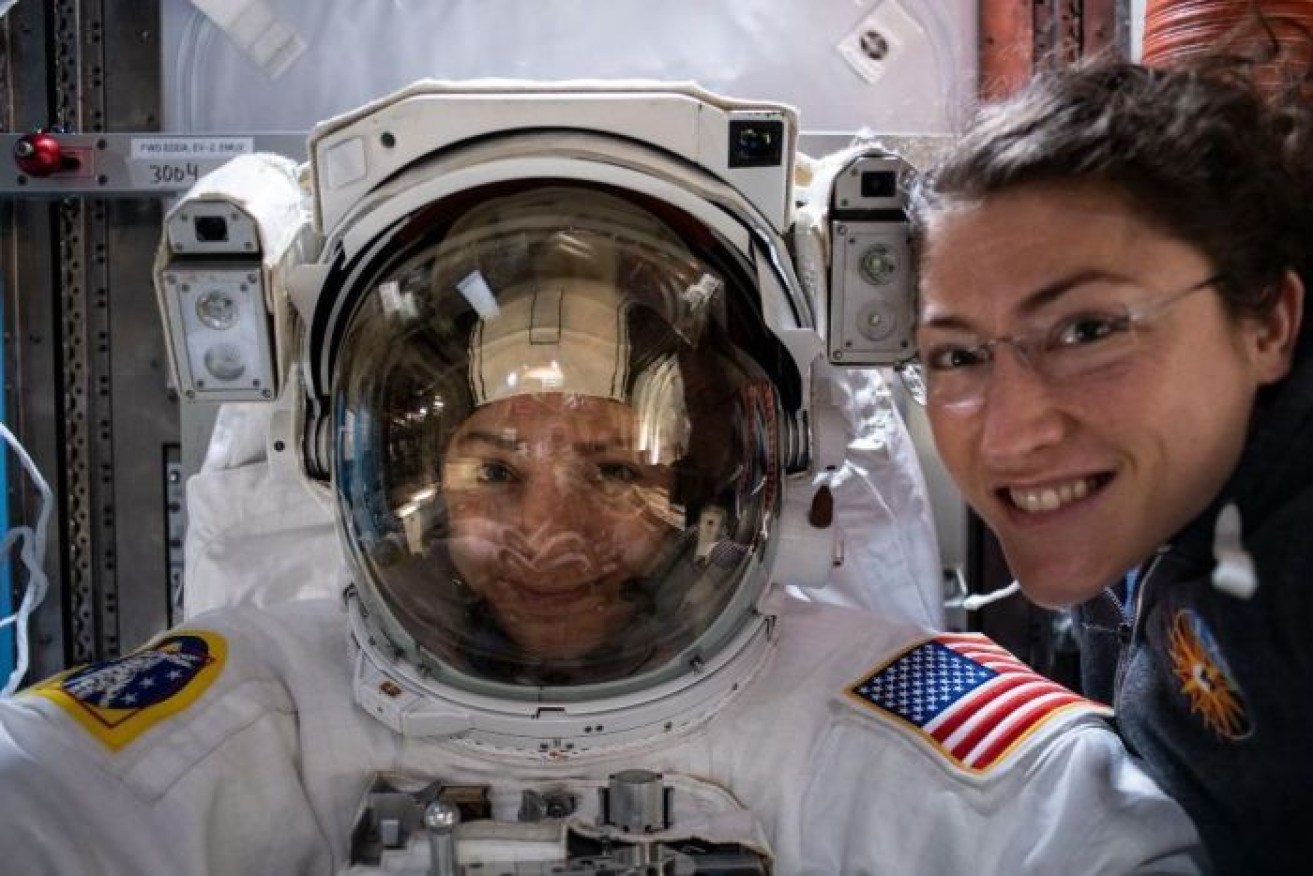Female astronauts make history with spacewalk


Astronauts Jessica Meir and Christina Koch. Photo: Twitter/NASA
The world’s first all-female spacewalking team has made history, replacing a broken part of the International Space Station’s power grid.
As NASA astronauts Christina Koch and Jessica Meir successfully completed the job with wrenches, screwdrivers and power-grip tools, it marked the first time in a half-century of spacewalking that men weren’t part of the action.
The pair insisted they were just doing their job after years of training, following in the footsteps of women who paved the way.
America’s first female spacewalker from 35 years ago, Kathy Sullivan, was delighted. She said it’s good to finally have enough women in the astronaut corps and trained for spacewalking for this to happen.
US President Donald Trump put in a congratulatory call from the White House to mark “this historic event … truly historic.
“What you do is incredible. You’re very brave people,” Mr Trump told them as they wrapped up their spacewalk.
Meir replied: “We don’t want to take too much credit because there have been many others – female spacewalkers – before us. This is just the first time that there have been two women outside at the same time … For us, this is really just us doing our job.”
There have been 227 spacewalkers since the first spacewalk in 1965, but all of them have included a male astronaut or cosmonaut.
NASA live-streamed the event on their YouTube account.
NASA leaders, Girl Scouts and others also cheered Koch and Meir on. Parents also sent in messages of thanks and encouragement via social media. NASA included some in its TV coverage.
“Go girls go,” two young sisters wrote on a sign in crayon. A group of middle schoolers held a long sign reading “The sky is not the limit!!”
At the same time, many expressed hope this will become routine in the future.
NASA originally wanted to conduct an all-female spacewalk in March, but did not have enough medium-size suits ready to go until the summer.
Koch and Meir were supposed to install more new batteries in a spacewalk next week but ventured out three days earlier to deal with an equipment failure that occurred over the weekend.
It was the second such failure of a battery charger this year, puzzling engineers and putting a hold on future battery installations for the solar power system.
NASA administrator Jim Bridenstine watched the big event unfold from Washington headquarters.
“We have the right people doing the right job at the right time,” he said. “They are an inspiration to people all over the world, including me. And we’re very excited to get this mission under way.”
Speaker of the House Nancy Pelosi sent congratulations to Koch and Meir “for leaving their mark on history” and tweeted that they’re an inspiration to women and girls across America.
The spacewalkers’ main job was to replace the faulty 19-year-old charge-regulating device for one of the three new batteries that was installed last week by Koch and Andrew Morgan.
As the seven-hour spacewalk drew to a close, Mission Control declared success, informing the astronauts that the new charger seemed to be working and the space station was back to full power. The women dragged in the broken unit, the size of a bulky box, so it can be returned to earth early next year for analysis.
“Jessica and Christina, we are so proud of you,” said Morgan, one of four astronauts inside. He called them his “astrosisters”.
Spacewalking is widely considered the most dangerous assignment in orbit. Italian astronaut Luca Parmitano, who operated the station’s robot arm from inside during Friday’s spacewalk, almost drowned in 2013 when his helmet flooded with water from his suit’s cooling system.
It took two decades for women to catch up with men in the spacewalking arena.
The world’s first spacewalker on March 18, 1965, Soviet cosmonaut Alexei Leonov, died last week. NASA astronaut Ed White became the first US spacewalker less than three months after Leonov’s feat.
Women did not follow out the hatch until 1984. The first was Soviet cosmonaut Svetlana Savitskaya. Sullivan followed three months later.
-with AAP








